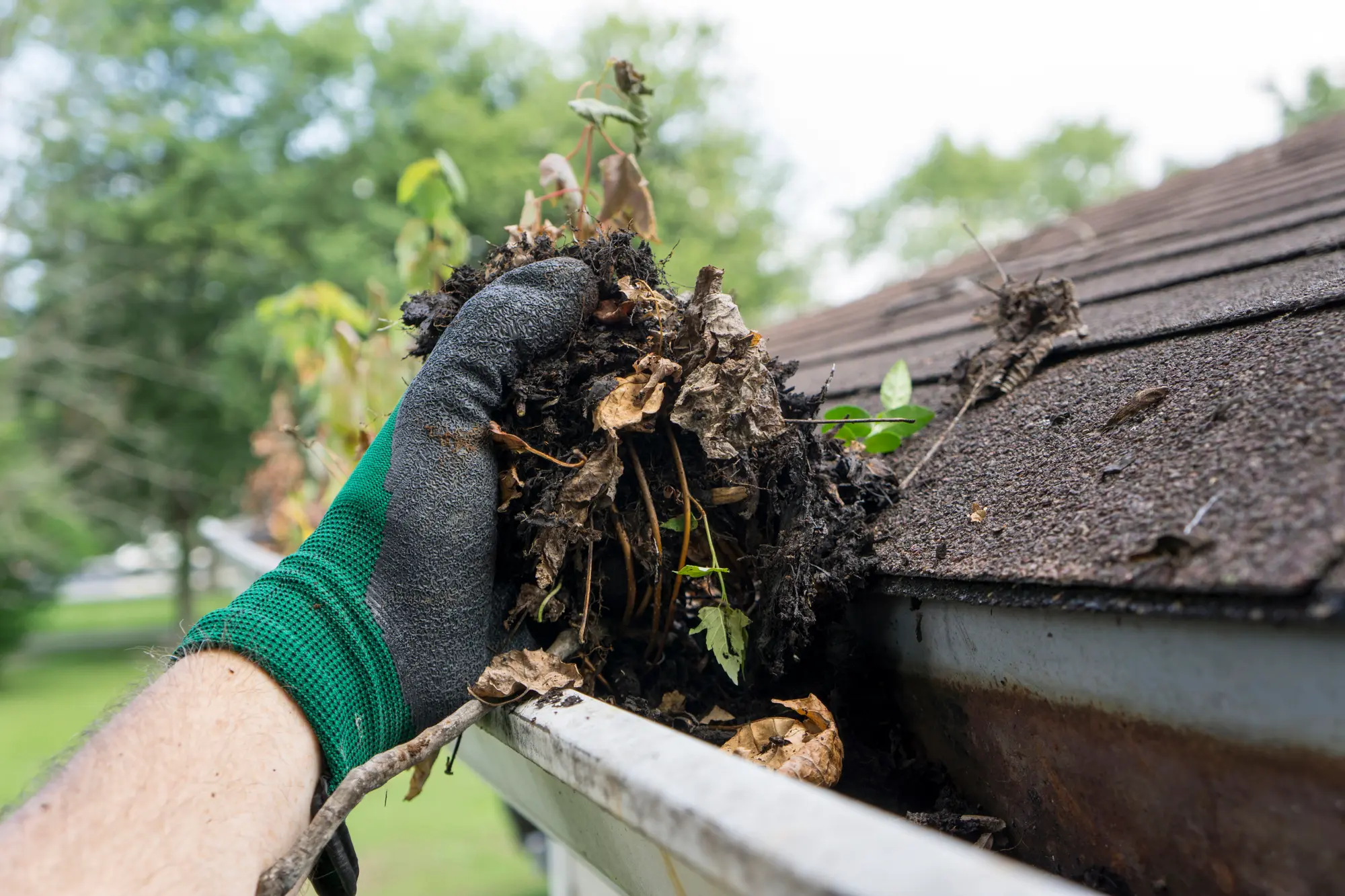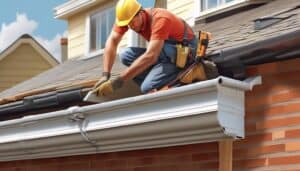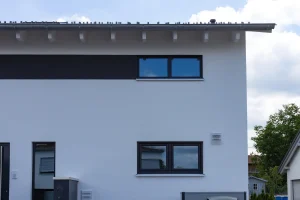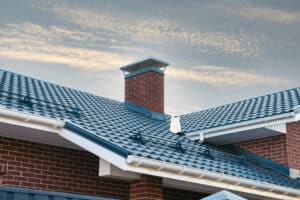Often underestimated, gutter upkeep is essential for preserving your home’s structural integrity. As the seasons shift, it’s crucial to keep your gutters clear and functional. This task requires a methodical approach, starting with safety measures before tackling debris removal. Once clean, it’s vital to check water flow.
In the following sections, we’ll explore detailed cleaning methods, preventative measures, and the potential consequences of neglecting gutter maintenance. Let’s delve into why consistent care is crucial for safeguarding your home.
Key Takeaways
- Regular gutter maintenance is essential for preserving the structural integrity of your home.
- By consistently cleaning and inspecting your gutters, you can prevent a multitude of problems.
- Regularly clearing debris from your gutters allows rainwater to drain efficiently, protecting your roof, walls, and foundation from damage.
- Preventing gutter clogs helps to avoid sagging gutters and potential water infiltration into your home.
- Routine inspections allow you to detect and address problems like cracks, rust, or detachment before they worsen.
Why Is Rain Gutter Cleaning Important for Your Home?
The critical importance of rain gutter maintenance cannot be overstated in preserving a home’s structural soundness. Rain gutter cleaning prevents costly water damage to your home’s roof, foundation, and exterior. When gutters become obstructed, water is unable to flow freely, leading to potential water infiltration into walls, foundations, and roofs. This can result in substantial water damage, mold growth, and costly repairs. By diligently cleaning gutters, homeowners can effectively prevent these issues and safeguard their property from such harm.
Furthermore, well-maintained gutters play a crucial role in directing rainwater away from a home’s foundation, mitigating the risk of basement flooding and soil erosion. Beyond protecting the structural integrity of a home, gutter cleanliness is essential for maintaining a pest-free environment. Clogged gutters create ideal breeding grounds for mosquitoes, termites, and other insects, posing potential health hazards to occupants.
Lastly, the aesthetic appeal of a home is significantly influenced by the condition of its gutters. Overflowing gutters can cause unsightly stains on exterior walls, create muddy areas around the foundation, and damage landscaping. Regular gutter cleaning not only ensures optimal water drainage but also enhances a home’s overall curb appeal, reflecting the homeowner’s pride in their property.
What Are the Pre-Cleaning Safety Measures to Consider During Rain Gutter Cleaning?
Prioritizing safety is paramount when cleaning your gutters. Begin by carefully inspecting your ladder for any damage or instability. Ensure it is placed on a solid, level surface. When selecting a ladder, choose one that extends well above your gutters for safe and comfortable reach. Always verify the ladder’s condition before climbing.
Here are pre-cleaning safety measures to consider:
- Ladder Placement: Always place your ladder on solid, level ground. If the ground is uneven, use a ladder leveler to help keep your ladder stable. Avoid placing it near doors that could be opened during your work.
- Protective Gear: Wear durable work gloves to protect your hands from sharp debris and dirt. Safety goggles are also crucial to shield your eyes when cleaning gutters.
- Safe Practices: When using an extension ladder, avoid overreaching or leaning too far to the side. Always keep your hips within the boundaries of the ladder rails. It’s advisable to have someone spot you while climbing a ladder to ensure additional safety.
Is it necessary to remove debris before cleaning gutters?
It is highly advisable to clear away any large debris from your gutters before starting a deep clean considering that removing large items like branches, sticks, or heavy clumps of leaves will make the cleaning process more efficient and less time-consuming.
Obstructed gutters can significantly impair the proper functioning of a drainage system, leading to a cascade of potential problems. When gutters are filled with debris, water cannot flow freely, increasing the risk of blockages and subsequent damage. By diligently removing debris before cleaning, homeowners can effectively prevent issues such as water overflow, leaks, and structural damage to their property.
Furthermore, the task of cleaning gutters is made considerably safer and easier when free of accumulated debris. Climbing a ladder to clear out clogged gutters can be hazardous due to the presence of slippery surfaces and unexpected obstacles. By removing debris initially, homeowners create a safer working environment and reduce the likelihood of accidents. Moreover, a thorough cleaning is facilitated by the absence of debris, ensuring that all dirt and blockages are removed effectively.
In conclusion, prioritizing the removal of debris prior to gutter cleaning is essential for optimal drainage, preventing blockages, and enhancing safety. This proactive approach contributes to the overall health and longevity of the gutter system, safeguarding the property from potential water damage. Regular debris removal and gutter cleaning are vital components of proper home maintenance.
What is the best method for clearing debris from gutters and downspouts during gutter cleaning?
Once the visible debris has been removed from your gutters, it’s crucial to flush the entire system with water to ensure optimal performance. This process helps identify and eliminate hidden obstructions that may have been overlooked during the initial cleaning.
Here are the steps to effectively flush your gutters and downspouts:
- Flush the Gutters: Start near the downspout and use a garden hose to flush the gutter, moving toward the opposite end. Observe how the water runs; it should flow steadily. If the water pools, there may still be leaves or twigs creating a subtle blockage.
- Inspect and Clean the Downspout: If the water doesn’t flow out freely or backs up, the downspout may be clogged. You can dislodge minor blockages by tapping the side of the downspout. For more stubborn clogs, use a plumbing snake or a pressure washer to clean the downspout thoroughly.
- Check for Proper Drainage: After flushing gutters and the downspouts, ensure that water is not pooling near your foundation. If necessary, extend the downspout further away from the house to prevent water damage.
How to Ensure the Longevity and Effectiveness of Your Gutter System After Rain Gutter Cleaning?
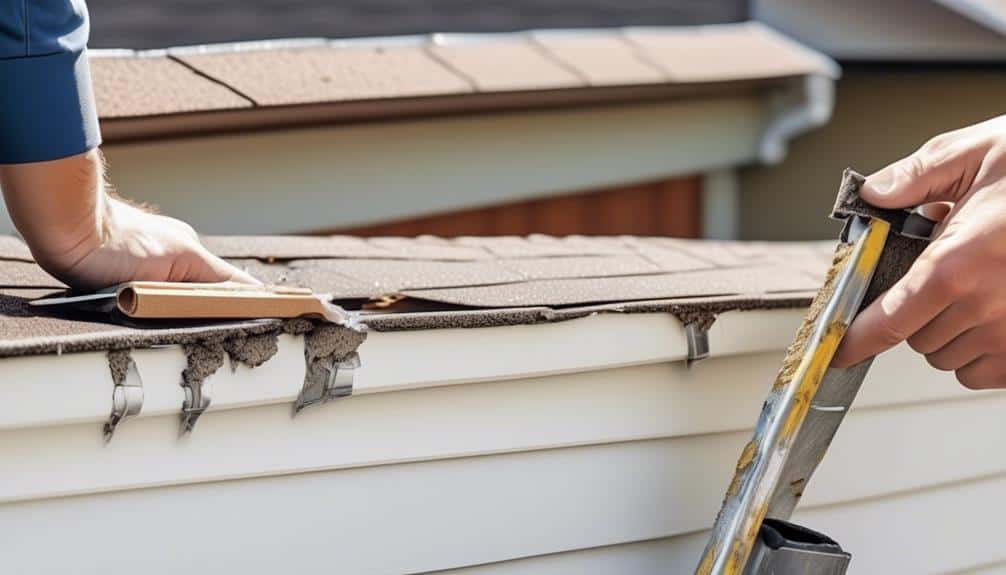
To prolong the life and efficiency of your newly cleaned gutter system, consistent care is essential. Regular inspections are crucial to identify potential issues early on. Look for signs of damage such as leaks, loose fasteners, or sagging sections, and address them promptly to prevent further complications. By staying vigilant in monitoring your gutters, you can avoid costly repairs and ensure optimal performance.
Maintaining a debris-free gutter system involves more than just cleaning. Regular trimming of overhanging trees and branches is vital to prevent leaves, twigs, and other organic matter from accumulating in your gutters. This proactive approach significantly reduces the likelihood of clogs and water damage.
Investing in gutter guards can provide an additional layer of protection for your gutters. These devices act as a barrier, preventing leaves and debris from entering the system while allowing rainwater to flow freely. By reducing the frequency of cleaning and minimizing the risk of clogs, gutter guards can save time and effort in the long run.
